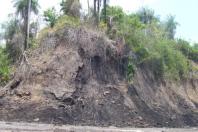Petrobras and Total to Evaluate Oil Shale Opportunities in Africa and in the Middle East
Petrobras and Total to Evaluate Oil Shale Opportunities in Africa and in the Middle East
22 December 2007
Petrobras and Total E&P Activites Petrolieres signed a cooperation agreement to evaluate the exploration, development, and production of oil extracted from oil shale deposits in specific regions in African and Middle Eastern countries. Under the agreement, the companies will carry out studies, exchange information, and negotiate concession agreements.
Petrobras and Total’s technical teams will analyze the projects’ viability, including aspects such as the environment, and legal, technical, and economic issues. If viability is confirmed and approved by the respective executive boards, a project development evaluation will be undertaken, and Petrobras will be the operator.
The cooperation between the companies will also allow for technology exchanges. Petrobras owns an oil shale oil extraction process, Processo Petrosix, and has had an industrial-scale unit operating commercially since 1991 producing oil, fuel gas, liquefied gas and other derivatives. Total, meanwhile, has state-of-the-art oil upgrading technology and deep knowledge of the region where the projects of interest are located.
In a statement, Petrobras noted that the scenario of oil scarcity and high oil prices have attracted attention and investments to new sources of energy, including oil shale.
Several countries are considering resuming or expanding their oil shale production units. The cooperation agreement between Petrobras and Total follows this global trend and has significant representation to develop new oil production units with oil shale processing.
Earlier this year, Petrobras signed separate agreements with the Ministry of Energy & Mineral Resources (MEMR) of Jordan (earlier post) and with the Moroccan National Office for Hydrocarbons and Mines (ONHYM) to undertake studies for the use of Petrosix technology in Jordan’s Attarat field and Morocco’s Timahdit field.
Petrobras has been working with oil shale since 1954. In 2006, Petrobras’ average oil production from shale rock was 4,200 barrels a day at the Schist Industrialization Business Unit (SIX) in São Mateus do Sul, 140 kilometers from Curitiba. The plant is set in one of the world’s biggest reserves of this mineral, the Irati Formation, which covers the states of São Paulo, Paraná, Santa Catarina, Rio Grande do Sul, Mato Grosso do Sul, and Goiás.
Among the shale-derived products Petrobras currently manufactures are fuel oil, naphtha, fuel gas, liquefied gas, and sulfur, in addition to byproducts that can be used by the asphalt, cement, agricultural, and ceramics industries.
Oil shale is a fine-grained sedimentary rock that contains kerogen, an organic complex that can be converted to oil and other petroleum products. Unlike the bitumen derived from tar sand, the kerogen in oil shale is a solid that does not melt and is insoluble. In general, In general, releasing organic material from oil shale and converting it into a liquid form requires pyrolysis to convert the kerogen to a condensable vapor which, when cooled, becomes liquid shale oil. This process is called “retorting.”
Depending on the efficiency of the process, a portion of the kerogen may not be vaporized but deposited as “coke” on the remaining shale, or converted to other hydrocarbon gases. In some processes, residual carbon and hydrocarbon gases may be captured and combusted to provide process heat. For the purposes of producing shale oil, the optimal process is one that minimizes the thermodynamic reactions that form coke and hydrocarbon gases and maximizes the production of shale oil.
Maximum oil production requires pyrolysis at the lowest possible temperature (about 480 degrees centigrade) to avoid unnecessary cracking of hydrocarbon molecules, which reduces oil yields.
Petrobras uses a conventional production process in which the shale is mined, crushed and fed into a surface gas combustion retort for pyrolysis and processing. (The other major process option is in-situ production.) The Petrobras 11-m vertical shaft Gas Combustion Retort (GCR) is the largest surface oil shale pyrolysis reactor currently operating.
Greenhouse gas emissions and water consumption are both issues with oil shale processing. Earlier this year, Adam Brandt at the University of California, Berkeley calculated the energy efficiencies and greenhouse gas emissions of two different shale to liquid fuel processes: Shell’s in situ process, and the Alberta Taciuk Processor (OSEC). Neither is a direct match to the Petrosix process. However, Brandt found that both processes were very energy intensive and produced GHG emissions comparable to or possibly higher than tar sands emissions.
A study published earlier this year by the European Academies Science Advisory Council on the use of oil shale in power generation—based on Estonia’s experience— concluded that under current electricity production methods, oil shale contributes more to climate change than coal. However, with new production methods, it would fall to the same level as coal.


